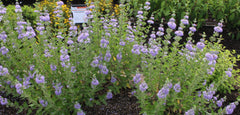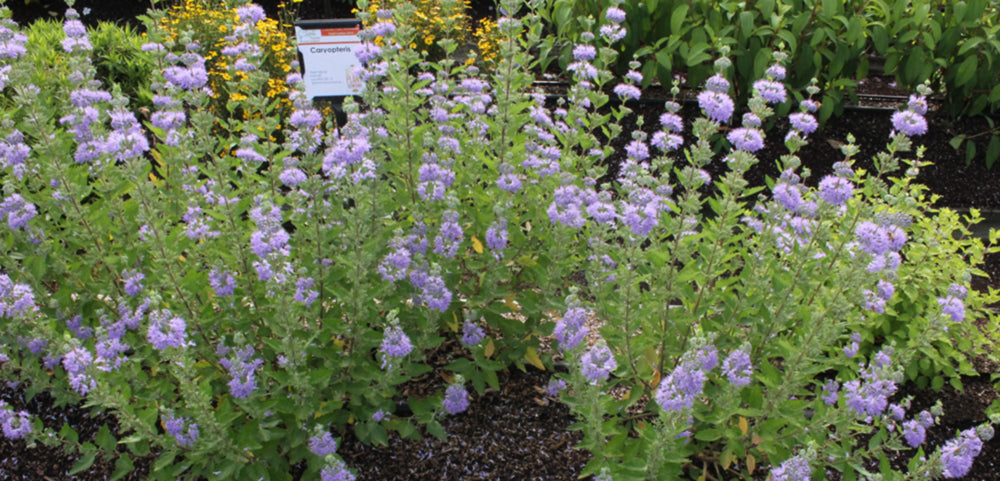Bluebeard Shrub (Caryopteris spp.)
Bluebeard Shrub Plant Features
If you have a hot, dry spot in your landscape, you can't go wrong adding this delightful plant. Bluebeard straddles the line between perennial and shrub so you can use it in the flower border or in a low-maintenance landscape. You can also cut Bluebeard back to the ground in winter or leave it standing (in Northern regions, it often dies back to the ground over winter anyway). It's a garden favorite because drought-tolerant Bluebeard produces a plethora of rich, violet-blue flowers from late summer into autumn. These flowers are also magnets for bees and butterflies. The deer- and rabbit-resistant plants grow 3 feet tall and wide. Hardy from zones 5-9.Discover more easy-care perennials that attract butterflies.
Bluebeard Questions?
Email us your questions and one of our garden experts will get back to you!
Bluebeard Shrub Growing Instructions
Bluebeard grows best in a hot, sunny spot -- at least 6 hours of direct sun each day. It tolerates partial shade, too, but it won't bloom as well and may grow sparse and a bit floppy. Happily, bluebeard tolerates drought like a champ; once planted, you rarely have to water it to keep it happy. Like many drought-tolerant plants, though, bluebeard thrives in just about any soil that drains well. If you have clay, amend it liberally with organic matter (such as compost) before planting bluebeard.Bluebeard produces flowers on new wood so don't worry about clipping away any old growth that looks rangy or dead. You can even clip it back to the ground in early spring if you'd like.
In good soil, bluebeard doesn't require regular applications of fertilizer, but if you have poor soil, use a timed-release fertilizer each spring to get your plant off to a good start every year.
Grow bluebeard for the bees; it's not recommended for human or animal consumption.
-
Water
Medium water needs
-
Light
Outside: Sun
-
Colors
Blue
-
Special Features
Attracts butterflies
Attracts hummingbirds
Deer/rabbit resistant
Complement your Bluebeard Shrub
Butterfly BushTurn your backyard into a butterfly haven by planting buddleia alongside bluebeard. These two nectar-rich plants provide a feast of nectar for pollinators.
Butterfly Weed
Create a butterfly banquet by planting butterfly weed and bluebeard in the same bed.
Coreopsis
Yellow and blue always look great together, that's why coreopsis makes an outstanding partner for bluebeard.

